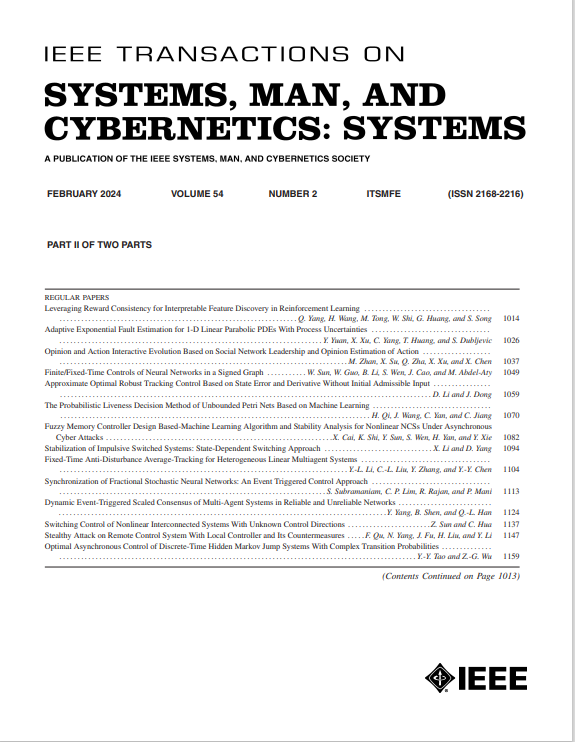Reciprocal-Type Zeroing Neural Dynamics Model for Tackling Time-Dependent Lyapunov Matrix Equation Problems and Applications
IF 8.7
1区 计算机科学
Q1 AUTOMATION & CONTROL SYSTEMS
IEEE Transactions on Systems Man Cybernetics-Systems
Pub Date : 2025-09-23
DOI:10.1109/TSMC.2025.3611700
引用次数: 0
Abstract
Time-dependent Lyapunov matrix equation (TDLME) plays a central role in the control of linear and nonlinear systems. Existing models, including the classical zeroing neural dynamics (ZNDs) model and its variants, have been used to address the TDLME problem. However, those models require time-dependent matrix inversion, which is computationally demanding, and they primarily focus on measurement-related noise, overlooking other sources of system uncertainty. To overcome these challenges, we propose an inverse-free reciprocal-type ZND (RTZND) model. This model integrates an energy-based error function with the ZND framework, eliminating the need for matrix inversion and incorporating error-feedback-related noise through its closed-loop control structure. We establish the convergence and robustness of the RTZND model using Lyapunov stability theory and assess its performance under external disturbances. Numerical simulations confirm its effectiveness and improved computational efficiency in solving the TDLME problem. We further confirm its applicability through two case studies, a time-dependent linear system and a nonlinear system modeled by the single machine infinite bus (SMIB) system, highlighting the RTZND model’s practical value in addressing TDLME problems.处理时变李雅普诺夫矩阵方程问题的往复式归零神经动力学模型及其应用
时变李雅普诺夫矩阵方程(TDLME)在线性和非线性系统的控制中起着核心作用。现有的模型,包括经典的归零神经动力学(ZNDs)模型及其变体,已被用于解决TDLME问题。然而,这些模型需要依赖于时间的矩阵反演,这在计算上要求很高,而且它们主要关注与测量相关的噪声,而忽略了系统不确定性的其他来源。为了克服这些挑战,我们提出了一个逆自由往复型ZND (RTZND)模型。该模型将基于能量的误差函数与ZND框架相结合,通过闭环控制结构消除了矩阵反演的需要,并引入了误差反馈相关的噪声。利用李雅普诺夫稳定性理论建立了RTZND模型的收敛性和鲁棒性,并评估了该模型在外界干扰下的性能。数值模拟验证了该方法的有效性,提高了求解TDLME问题的计算效率。我们通过两个案例研究进一步证实了它的适用性,一个是时间相关的线性系统,另一个是由单机无限总线(SMIB)系统建模的非线性系统,突出了RTZND模型在解决TDLME问题中的实用价值。
本文章由计算机程序翻译,如有差异,请以英文原文为准。
求助全文
约1分钟内获得全文
求助全文
来源期刊

IEEE Transactions on Systems Man Cybernetics-Systems
AUTOMATION & CONTROL SYSTEMS-COMPUTER SCIENCE, CYBERNETICS
CiteScore
18.50
自引率
11.50%
发文量
812
审稿时长
6 months
期刊介绍:
The IEEE Transactions on Systems, Man, and Cybernetics: Systems encompasses the fields of systems engineering, covering issue formulation, analysis, and modeling throughout the systems engineering lifecycle phases. It addresses decision-making, issue interpretation, systems management, processes, and various methods such as optimization, modeling, and simulation in the development and deployment of large systems.
 求助内容:
求助内容: 应助结果提醒方式:
应助结果提醒方式:


